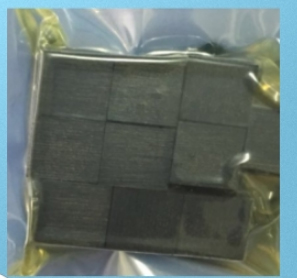Lanthanum metal
Lanthanum is a silver-white metal, soft and easy to cut. The fresh
section is silver-gray and is easily oxidized in the air. There are
three crystal types, α type, hexagonal crystal system, β type,
face-centered cubic stacking, stable existence at 350℃, density =
6.19g/cm^3; γ type, stable existence at >868°C, density = 5.98g/cm^3.
Avoid contact with acids, oxides, halogens, and sulfur. Contact with
heat, open flames, oxidizers and other substances may cause burning
hazards. Generally sealed in solid paraffin or immersed in kerosene.
The main use of lanthanum
1. The metal lanthanum shell is used to produce nickel-metal hydride
batteries, which is one of the most important applications of lanthanum.
2. Mainly used to manufacture special alloy precision optical glass,
high-refraction optical fiber board, suitable for making cameras,
cameras, microscope lenses and advanced optical instrument prisms, etc.
Also used to make ceramic capacitors, piezoelectric ceramic dopants and
X-ray luminescent materials lanthanum bromide powder and so on. It is
obtained by extraction from lanthanum phosphate ore or by burning
lanthanum carbonate or lanthanum nitrate. It can also be prepared by
thermal decomposition of lanthanum oxalate.
3. Used as a catalyst for various reactions, such as catalyzing the
oxidation reaction of carbon monoxide when doped with cadmium oxide, and
catalyzing the hydrogenation of carbon monoxide to methane when doped
with palladium. Lanthanum oxide impregnated with lithium oxide or
zirconium oxide (1%) can be used to make ferrite magnets. It is a very
effective selective catalyst for the oxidative coupling of methane to
ethane and ethylene. Used to improve the temperature dependence and
dielectric properties of barium titanate (BaTiO) and strontium titanate
(SrTiO) ferroelectrics, and to manufacture fiber optics and optical
glass.
4. Lanthanum 138 is radioactive with a half-life of 1.1×10^1^1 years. It
has been tried to treat cancer.
.
.
.

Lanthanum is a silver-white metal, soft and easy to cut. The fresh
section is silver-gray and is easily oxidized in the air. There are
three crystal types, α type, hexagonal crystal system, β type,
face-centered cubic stacking, stable existence at 350℃, density =
6.19g/cm^3; γ type, stable existence at >868°C, density = 5.98g/cm^3.
Avoid contact with acids, oxides, halogens, and sulfur. Contact with
heat, open flames, oxidizers and other substances may cause burning
hazards. Generally sealed in solid paraffin or immersed in kerosene.
The main use of lanthanum
1. The metal lanthanum shell is used to produce nickel-metal hydride
batteries, which is one of the most important applications of lanthanum.
2. Mainly used to manufacture special alloy precision optical glass,
high-refraction optical fiber board, suitable for making cameras,
cameras, microscope lenses and advanced optical instrument prisms, etc.
Also used to make ceramic capacitors, piezoelectric ceramic dopants and
X-ray luminescent materials lanthanum bromide powder and so on. It is
obtained by extraction from lanthanum phosphate ore or by burning
lanthanum carbonate or lanthanum nitrate. It can also be prepared by
thermal decomposition of lanthanum oxalate.
3. Used as a catalyst for various reactions, such as catalyzing the
oxidation reaction of carbon monoxide when doped with cadmium oxide, and
catalyzing the hydrogenation of carbon monoxide to methane when doped
with palladium. Lanthanum oxide impregnated with lithium oxide or
zirconium oxide (1%) can be used to make ferrite magnets. It is a very
effective selective catalyst for the oxidative coupling of methane to
ethane and ethylene. Used to improve the temperature dependence and
dielectric properties of barium titanate (BaTiO) and strontium titanate
(SrTiO) ferroelectrics, and to manufacture fiber optics and optical
glass.
4. Lanthanum 138 is radioactive with a half-life of 1.1×10^1^1 years. It
has been tried to treat cancer.
.
.
.

|
|
